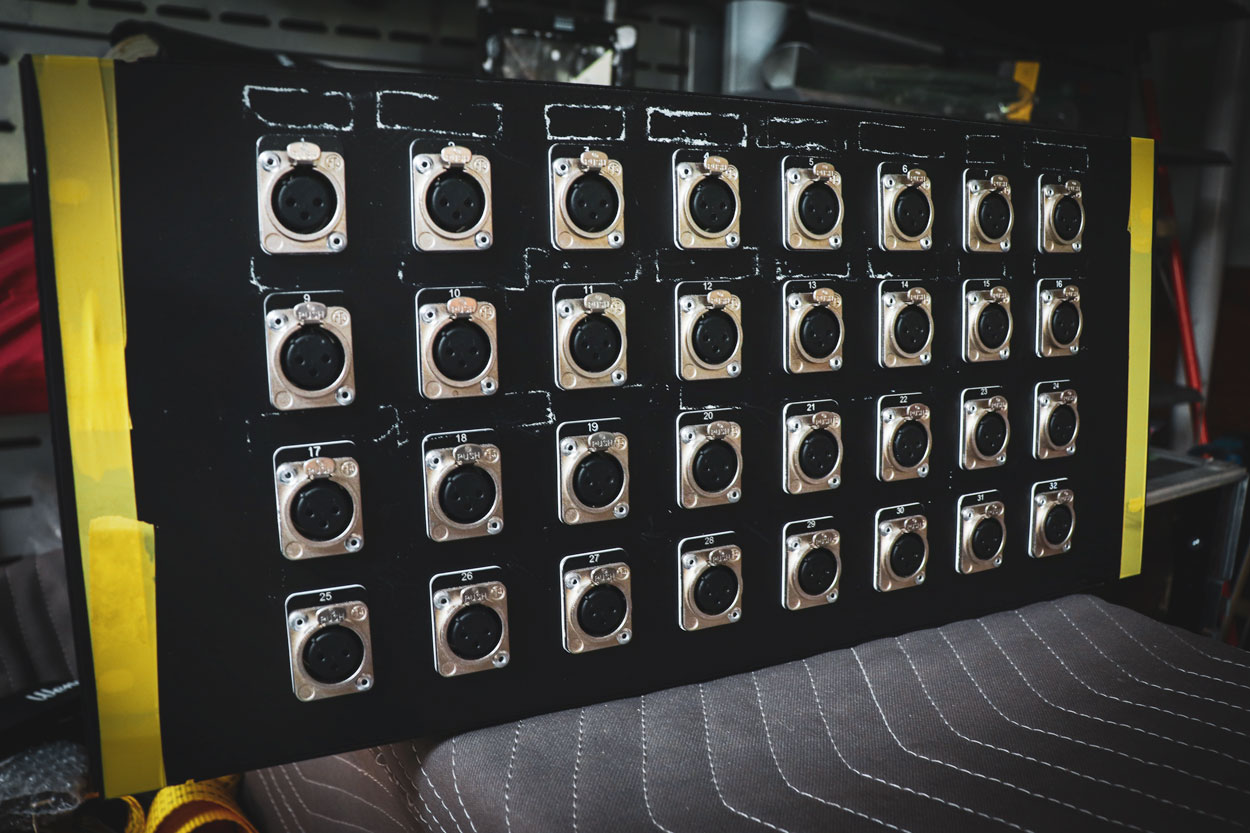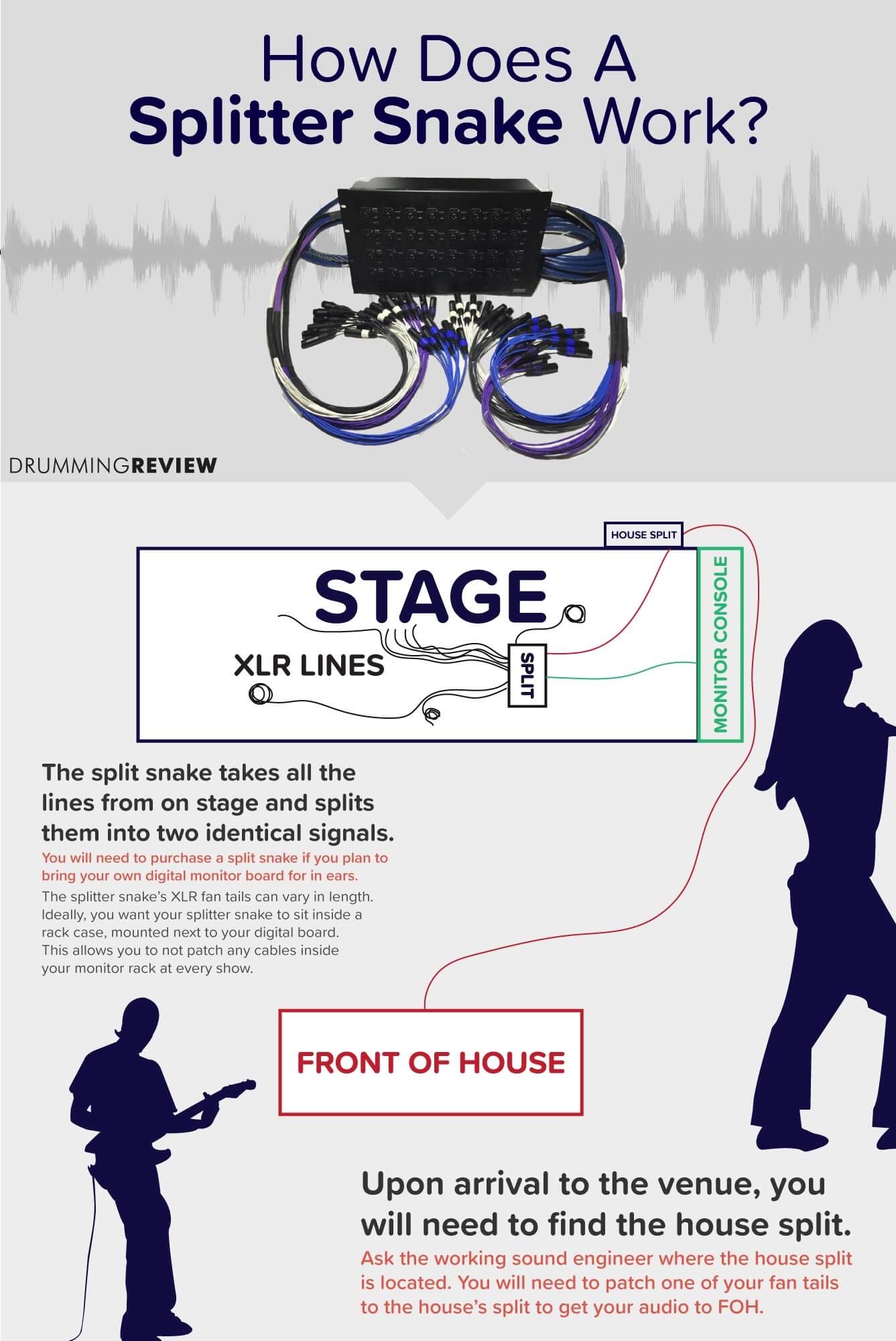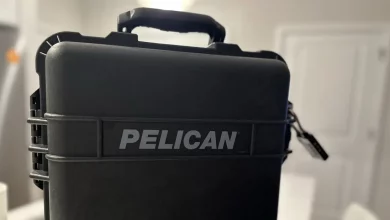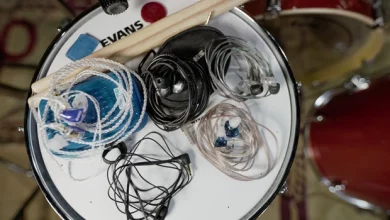
We may earn a commission from the affiliate links on this site. Learn more›
Your band just bought a brand-new digital mixing board as well as in-ear monitor units. You’re setting everything up and getting all configured when you realize you’ve missed one piece of the puzzle: the splitter snake.
Picking a Splitter Snake for your Band’s IEM System
This piece of audio gear is required for using a digital monitor board at live gigs (unless you bring your own FOH console). You need a way to split the audio feed from all the microphones on stage to go your monitor board and to go to the front of house mixing board.
If you’re looking for an affordable splitter snake, check out this one from Seismic. Go with rack-mounted, as this protects the snake from being stepped on while on stage.
When we purchased our splitter snake, we went through two poorly-made (though abused on stage) ones before finding one that lasted the test of time.
I’m writing this article to save your band time and money and not to make the same mistakes we made upon purchase our first one.
Note
There are many different options available. What your band needs might not be what another does. The pricing on these splitter snakes is going to vary drastically, but it is worth it the higher up the price spectrum you go.
What is a Splitter Snake?
This piece of gear is essentially a regular audio snake outfitted with two XLR fan tails, effectively splitting the audio signal in two paths.
One of these XLR fans will be sent to the FOH engineer’s mixing desk and the other XLR fan will go into your monitor board.
This allows your band to have your own monitor mixes, adjust your own EQ (separate of FOH), add reverb and delays, and have total control of your on-stage in ear monitor mix.

There are many factors involved with purchasing a split snake. You need to be mindful of build quality, portability, if the unit is rack-mountable, as well the length of each XLR fan tail. Some snakes from certain companies will need to be made to order.
In my experience, CBI makes the best bang-for-your-buck when it comes to ear splitters.
1) Seismic Audio Splitter Snakes
5' and 15' XLR Trunks, but you can pick different sizes on the listing.
Seismic Audio is a company that prides itself on inexpensive gear. They make great products, but I suggest that you stay away from any of their floor stage boxes.
We have gone through two of these splitter snakes, but it was most likely because of other bands and stage crew accidentally stepping on the snake. I highly suggest you get a rack-mounted splitter snake.
Rack-mounted splitter snakes vs floor snakes
These types of snakes require a stage rack, but you’ll get much more value out of them. You’ll be able to patch them much easier and, best of all, you’ll be able to leave everything patched in the back of your rack.

Things like digital mixing boards or backing track setups will no longer need to be patched on the monitor end during a soundcheck.
You can go ahead and purchase a splitter that sits on the ground, but just be aware of a couple things:
This type of snake will be sitting on the ground on stage. If the stage vibrates at all because of low bass frequencies, it will disrupt the connection points for each XLR cable you have plugged in. A good DIY solution around this problem is to find some cheap foam that can sit underneath the snake box.
The XLR connectors found on the Seismic splitter snake are a bit cheap and barely held our cables. What happened? We began to lose channels during live shows at FOH.
To be fair, I think our stage snake was abused at our live shows. I’ve met many bands who have used Seismic’s rack-mounted splitter who have had no problems whatsoever.
If you’re in a tight spot financially and this is the only option, as I stated before, be sure to grab a big piece of foam and bring that with you to your shows.
You can set the foam underneath the splitter snake and that should alleviate any issues I just warned of. Aside from that issue, the XLR tails are of a solid quality; we have no issues in this regard.
The last thing to note is with splitter snakes and in-ear monitor systems, you’ll want to make sure your tails are 30′ in length. This allows you to place your stagebox wherever on stage and still have ample room to get to the house monitor board or split.
2) CBI Splitter Snakes
In ear monitor systems are common in touring musicians, and C.B.I. has developed a splitter snake that will fit perfectly into this type of system.
CBI Professional Wiring Systems is a family owned audio business located in upstate New York. After two failed splitter snakes from Seismic, we decided to give CBI a shot. Was it ever worth it.
The picture you see to the right is one of their “Ear Splitter” splitter snakes. The one pictured is only 16 channels, but they have a ton of different options all available to purchase now.

We decided to purchase the 32 channel splitter snake with 25′ and 6′ XLR tails. These snakes are rack-mounted, so you’ll need a rack case to go along with it. When the snake arrived, I installed it into our OSP 16-space shock rack, directly underneath our X32 Rack from Behringer.
After spending a few hours wiring the back, labeling the snake, and adding appropriate zip ties, it was time to plug in all the lines.
Immediately, from plugging in just the kick out XLR, I could tell this was a much higher-quality splitter snake (at a much higher cost, mind you). The force required to plug the XLR in is much greater and these connectors are made from metal.
Since purchasing our CBI splitter snake, we have had no issues with losing lines, bumping cables, or having someone step on our split.

3) Whirlwind Audio Concert Systems Splitter Snake
Another option (much pricier) to consider is Whirlwind Audio.
For this snake (and other products they sell), you’ll need to call and make an order for your exact needs. Expect to pay quite a fortune for these touring systems, as they are the standard for major arena touring acts.
These splitter snakes are usually kept in their own rack case and are usually more for venues or arena touring acts. You most likely won’t need this level of gear currently. My suggestion is to go with a splitter snake from CBI.
My Personal Splitter Snake Recommendation
After looking at all the split snakes available without custom order, my best pick would have to be the CBI 32 Channel 6’x25′.
32 channels gives you enough flexibility with your input list: stereo keyboards, separated stereo tracks, plenty of drums, stereo sample pads, vocals, the list goes on.
It’s also good to have more channels than you need in case one goes bad on a tour. The CBI not only performs great, it will last a long time; any of the Seismic floor snakes will be needing repairs much sooner than the CBI snakes.
Is your band currently using your own splitter snake? What one have you settled on? Do you like it? Leave a comment below if you’d like to share.
Are you considering buying one? Let me know if you have any questions below and I will get back to you as soon as I can with an answer.
I have a fair amount of knowledge on split snakes, in-ear monitor setups, and digital monitor boards. Thanks for reading.






Thanks for this review! I bought a Seismic Audio Splitter Snake a couple years back and only started actively using it recently. We’ve only used it 8 times and we already had connection issues happening. I looked into CBI and have custom ordered our Ear Splitter and can’t wait!
0
Hey man,
We just bought an ultra link splitter. Although the split outputs are supposed to be identical, only one of the two has an inbuilt transformer. This means everything we send to our in ears is powerful and quality but we’re worried about the signals going to FOH being too low for them to work with. Any ideas?
0
Hey Archie,
Can you provide the exact model UltraLink splitter? I will look into it.
0
The transformer is only for isolation. If both outputs had transformers, phantom power would not work.
0
I just created my own 24 in ,24 out splitter for our band.
It also has the advantages of db25 connections straight into our monitor mixer rack from our source racks on stage.
Honestly it needed to be ultra compact and reliable. Made with 2 x 12 in 1 ru rack xlr ins with 2x 12 xlr outs underneath it.
has ability to ground lift all xlrs from FOH console and isolates all FOH mixer phantoms as we use the pahntom power on our ui24 unit.
This all lives in a 6 RU half rack case with ui24 as monitor mixer. Best thing ever.
I did have to make my own PCBs and circuits. i would send a pic if anyone interested.
0
I’m interested in pics if you can share.
0